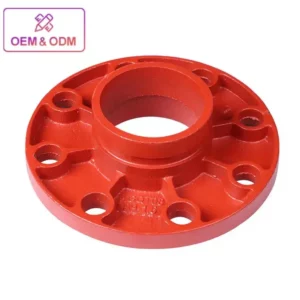The frequency of inspecting ductile iron pipe fittings flanged for corrosion can vary depending on several factors, including the operating conditions, environment, and the specific requirements or guidelines provided by regulatory bodies or industry standards. Here are some general recommendations:
Regular Visual Inspections:
Conduct visual inspections of the ductile iron pipe fittings at regular intervals. This can help identify any visible signs of corrosion, such as discoloration, rust stains, pitting, or flaking. Visual inspections can be performed during routine maintenance activities or as part of a comprehensive inspection program.
Operating Environment:
Consider the nature of the operating environment when determining the inspection frequency. Corrosion rates can vary depending on factors such as moisture levels, temperature extremes, exposure to chemicals, soil conditions, or atmospheric conditions. Harsher environments may require more frequent inspections.

Manufacturer Recommendations:
Consult the manufacturer’s guidelines or recommendations for the specific ductile iron pipe fittings being used. Manufacturers often provide recommendations on inspection intervals based on their product’s performance characteristics or warranty requirements. Adhering to these guidelines can help ensure the longevity and performance of the fittings.
Regulatory Requirements:
Local regulations or industry standards may specify inspection frequencies for ductile iron pipe fittings. These requirements may vary depending on the application, infrastructure type, or specific industry guidelines. Familiarize yourself with any applicable regulations or standards relevant to your installation and ensure compliance with the recommended inspection intervals.
Historical Data and Experience:
Consider historical data or past experience with similar installations or fittings in your region or industry. If corrosion issues have been observed in the past or if certain factors indicate an increased risk of corrosion, more frequent inspections may be warranted.
Ultimately, it is recommended to develop an inspection and maintenance plan specific to your ductile iron pipe fittings. This plan can outline the inspection frequency, methods, and criteria for evaluating corrosion. Consider involving qualified professionals, such as corrosion specialists or engineers, to assess your specific needs and provide expert guidance on inspection intervals and techniques.
Remember that early detection and timely intervention are crucial in managing corrosion. Regular inspections allow for prompt identification of corrosion-related issues, enabling appropriate actions to be taken to mitigate further damage and ensure the long-term integrity of the ductile iron pipe fittings.